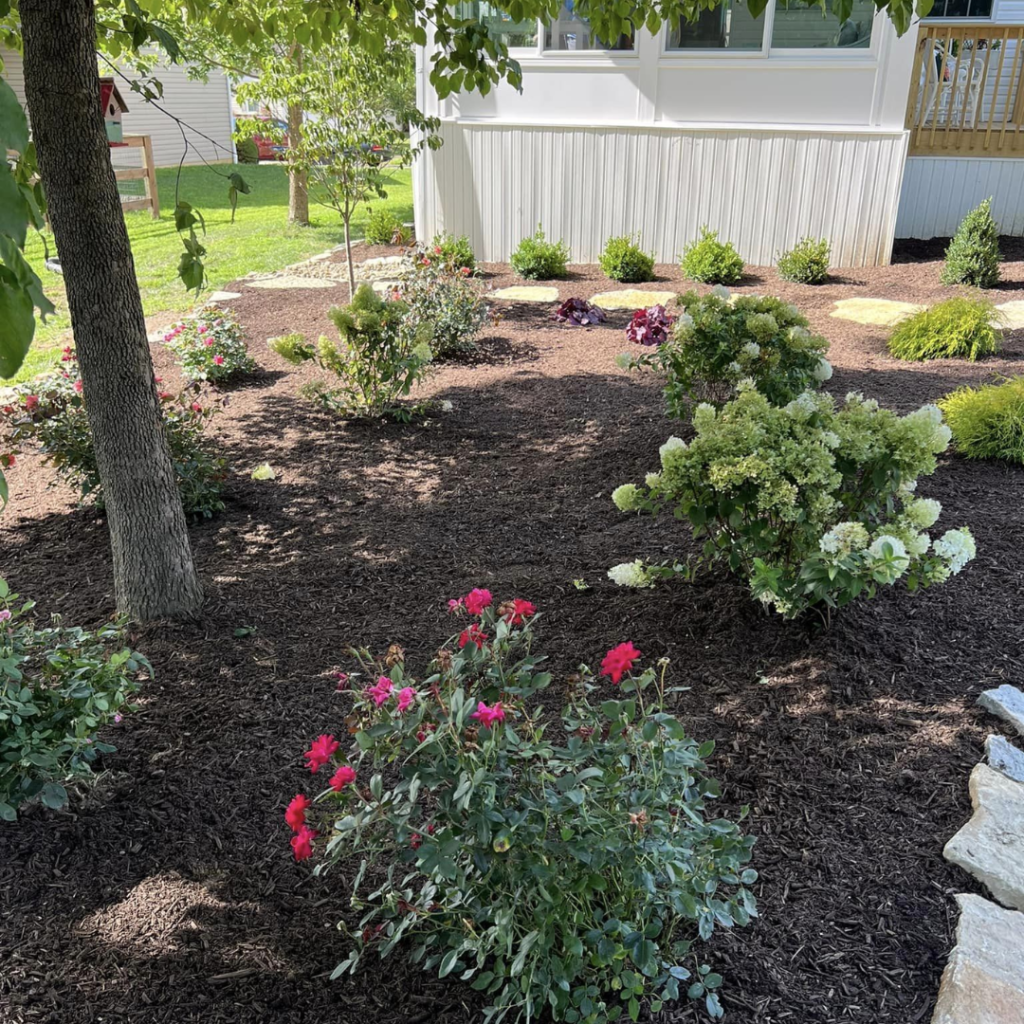
Learn how to create a low-maintenance landscaping plan to save time and money. Get tips for selecting the right plants and materials for your outdoor space.
What is Low-Maintenance Landscaping?
Benefits of Low-Maintenance Landscaping
Low-maintenance landscaping is an ideal choice for homeowners who want a beautiful outdoor space without the hassle of constant upkeep. It involves selecting plants and features that require minimal effort to maintain and that can thrive in the local environment. The benefits of low-maintenance landscaping are numerous, from reducing the amount of time spent on upkeep to saving money on expensive treatments. With a low-maintenance landscaping plan, you can enjoy a stunning outdoor space with minimal effort.
Low-maintenance landscaping is also beneficial because it can help conserve water, which is especially important in areas with water shortages. By using plants that are native to the local area, you can ensure that your garden will thrive with minimal water usage. Additionally, native plants are more resistant to diseases, pests, and other issues, which means you can save time and money on treatments.
Low-maintenance landscaping is also great for the environment. Native plants attract birds, bees, and other beneficial wildlife, which can help promote biodiversity. Plus, you can use plants that require little to no fertilizers or pesticides, which reduces the presence of toxic chemicals in the environment.
Overall, low-maintenance landscaping can be a great way for homeowners to create a beautiful outdoor space without the hassle of constant upkeep. By choosing plants and features that are native to the local area, you can enjoy a stunning garden with minimal effort and cost. Plus, you can help conserve water and protect the environment by selecting plants that require minimal fertilizers and pesticides.
Tips for Creating a Low-Maintenance Landscaping Plan
Creating a low-maintenance landscaping plan is an important step to maintaining a beautiful garden. It allows you to spend less time on maintenance and more time enjoying your outdoor space. There are a few key tips to keep in mind when designing a low-maintenance landscaping plan.
Firstly, choose native plants that are well-suited to your environment, as they require less water and care. For example, drought-tolerant plants such as succulents and cacti thrive in hot, dry climates with minimal care. Additionally, consider using mulch to keep moisture in the soil and reduce weeds.
Secondly, simplify your garden design to reduce the amount of time spent on maintenance. A simple design with fewer plants is easier to care for and often looks better. Consider grouping plants together to reduce the amount of space you have to water and weed.
Thirdly, use sustainable practices such as drip irrigation and rainwater harvesting to reduce the amount of water and energy needed to care for your garden. Drip irrigation systems are an efficient way to water plants and keep them healthy. Additionally, rainwater harvesting systems allow you to capture and store rainwater for use in your garden.
Finally, create a maintenance schedule to ensure that your garden stays in good shape. Regularly checking your plants for pests and diseases, as well as pruning and weeding, can help keep your garden in top shape. By following these tips, you can create a low-maintenance landscaping plan that will save you time and energy.
Selecting the Right Plants and Materials
Selecting the right plants and materials for a low-maintenance landscaping plan is essential for creating a beautiful and sustainable outdoor space. When choosing plants, look for ones that are native to your area as they are better adapted to local soil, temperature, and weather conditions.
Native plants also require less water and maintenance, so you won’t have to worry about them getting out of control. If you’re looking for a more formal look, choose plants that stay small, such as boxwoods and low-growing shrubs. For a more natural look, opt for larger, taller plants such as trees and ornamental grasses.
When it comes to materials, select ones that are durable and low-maintenance such as mulch or gravel. Stone or brick pathways are also a great option as they require little to no upkeep. Additionally, don’t forget to factor in the amount of sunlight each area of your garden will receive when selecting plants and materials. This will help ensure that your plants thrive and your outdoor space looks its best.
By taking the time to choose the right plants and materials, you can create a low-maintenance landscaping plan that you’ll be able to enjoy for years to come.
Creating a Low-Maintenance Landscape Design
Planning Out Your Space
Planning out your space is key to creating a low-maintenance landscape design. Before you start making your design, take some time to consider the size of your outdoor space, the climate in your area, and the amount of time and effort you have to devote to maintaining it. You’ll need to think about how much sun and shade your landscape will receive, where your plants should go, and what kind of materials you’ll need to use. For example, you may want to use materials that won’t require a lot of maintenance, such as gravel or mulch.
You should also consider the types of plants you’ll use; some plants are more low-maintenance than others. If you plan to install a sprinkler system, you’ll need to make sure you’re using efficient irrigation to conserve water. When planning your space, remember that it’s important to leave enough room for future expansion if you decide to add more features to your landscape. By taking the time to plan out your space and make sure you’re using efficient and low-maintenance materials and plants, you can create a beautiful and low-maintenance landscape design.
Incorporating Hardscaping Elements
Creating a low-maintenance landscape design doesn’t have to be hard. One way to make your yard look great while keeping maintenance to a minimum is by incorporating hardscaping elements. Hardscaping elements such as stone walls, walkways, and patios are both attractive and durable, meaning they require minimal upkeep.
Additionally, many hardscaping elements can easily be customized with plants and other natural elements for a more aesthetically pleasing look. Stone walls and walkways can also provide an additional layer of safety and security for your home.
Furthermore, hardscaping can provide additional surface area, allowing you to create more interesting and creative designs. Finally, hardscaping elements can also be used to create functional outdoor living areas, allowing you to entertain guests, relax, and enjoy the outdoors in a safe and secure environment.
With the right hardscaping elements, you can create a low-maintenance landscape design that is both attractive and functional. Incorporating hardscaping elements into your landscape design is an easy way to add value and beauty to your home while reducing the amount of time you have to spend on upkeep.
Maintaining Your Low-Maintenance Landscape
Considerations for Irrigation
When it comes to creating a low-maintenance landscaping plan, one of the most important considerations is irrigation. Irrigation is the process of providing water to plants and turf to promote growth and maintain health. To ensure a low-maintenance landscape, consider investing in an efficient irrigation system. An efficient system will allow you to water your plants with minimal effort and without wasting water. This is especially important in areas with limited water resources or during times of drought. Additionally, installing an efficient irrigation system will help reduce your water bill.
Think about the type of irrigation system that is best for your landscape. For instance, if your landscape consists of large areas of turf, sprinklers may be the best option. However, if you have a combination of turf and plants, drip irrigation may be more appropriate. Be sure to consider the size and shape of your landscape, as well as the types of plants and turf you have, when selecting an irrigation system.
Once you have an efficient irrigation system in place, you can rest easy knowing your landscape is well cared for. Regular maintenance and monitoring of the system is necessary to ensure it is working properly and not wasting water. By investing in an efficient irrigation system and taking proper care of it, you can ensure a low-maintenance landscape that will remain healthy and beautiful for years to come.
Taking Care of Your Plants
Taking care of your plants is an important part of maintaining your low-maintenance landscaping plan. Plants are a great way to add beauty and texture to your yard, but they do require some upkeep. Here are some tips for taking care of your plants: First, make sure to water your plants regularly. This is especially important in the summer, when the temperature and humidity levels can be higher. Second, fertilize your plants on a regular basis. This will help them stay healthy and vibrant. Third, prune your plants as needed. This will help keep them looking neat and tidy. Finally, be sure to check for pests and diseases. If you spot any, take care of them right away to prevent any further damage to your plants. With a little bit of effort, you can keep your low-maintenance landscaping plan looking great.
Regularly Trimming and Pruning
Trimming and pruning are two of the most important steps to take when it comes to maintaining a low-maintenance landscape. Regular trimming and pruning will help keep your plants healthy and vibrant, while also preventing overgrowth.
Trimming helps remove dead, diseased, and damaged branches, while pruning helps promote healthy growth by cutting away branches that are too close together and those that are blocking sunlight. Pruning also encourages new, healthy growth and blooms, resulting in a more attractive landscape.
While it may be tempting to put off trimming and pruning, it’s essential to do it regularly to get the most out of your low-maintenance landscaping plan. Doing so will help keep your plants healthy and looking great year-round. Additionally, regularly trimming and pruning can help you save money on maintenance costs, as it prevents the need for extensive pruning and trimming later on. To get the best results for a low-maintenance landscape, be sure to trim and prune on a regular basis.
Conclusion
Creating a low-maintenance landscaping plan is an effective way to save time and money while still having a beautiful outdoor space. With the right planning, selecting the right plants and materials, and properly maintaining your landscape, you can enjoy a low-maintenance landscape that you can be proud of.
If you’re looking for a low-maintenance landscaping plan for your home or business in Cincinnati, OH, look no further than Top Scapes Design. Our experienced team of landscapers can help you create a beautiful, low-maintenance plan that will look great for years to come. We specialize in creating sustainable, eco-friendly landscaping designs that are as beautiful as they are easy to maintain.
Our professional services include lawn care, tree care, irrigation, and more. We’ll ensure that your landscaping plan is tailored to meet the unique needs of your home or business. Plus, our friendly, knowledgeable staff will provide you with helpful tips and advice to help make your landscaping plan even more low-maintenance. With Top Scapes Design, you can rest assured that your landscaping plan will be beautiful, easy to maintain, and built to last. So contact us today and let us help you create the perfect low-maintenance landscaping plan for your home or business in Cincinnati, OH.
